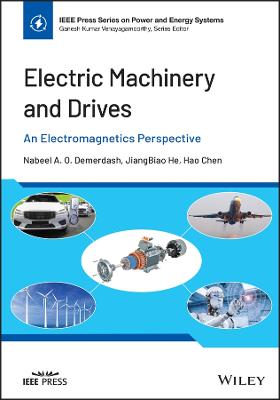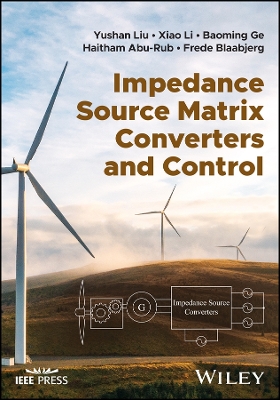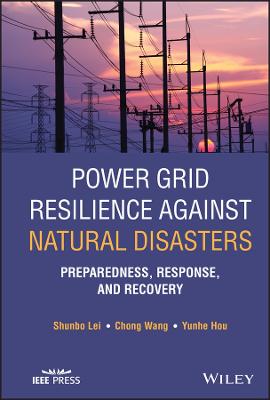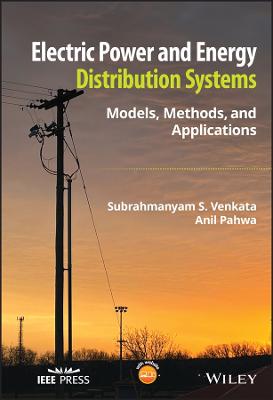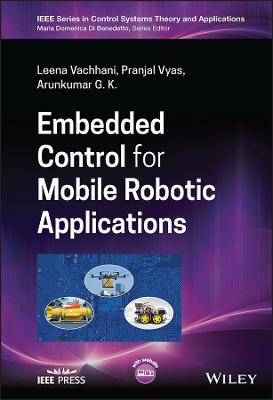Multimodal Perception and Secure State Estimation for Robotic Mobility Platforms
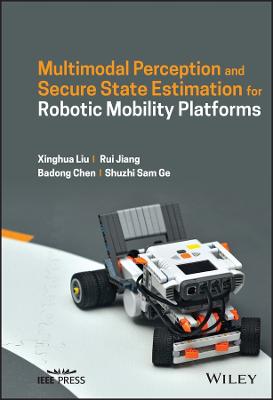 -15%
portes grátis
-15%
portes grátis
Multimodal Perception and Secure State Estimation for Robotic Mobility Platforms
Jiang, Rui; Ge, Shuzhi Sam; Chen, Badong; Liu, Xinghua
John Wiley & Sons Inc
10/2022
224
Dura
Inglês
9781119876014
15 a 20 dias
450
Descrição não disponível.
About the Authors xii
Preface xiv
1 Introduction 1
1.1 Background and Motivation 1
1.2 Multimodal Pose Estimation for Vehicle Navigation 2
1.2.1 Multi-Senor Pose Estimation 2
1.2.2 Pose Estimation with Constraints 4
1.2.3 Research Focus in Multimodal Pose Estimation 5
1.3 Secure Estimation 7
1.3.1 Secure State Estimation under Cyber Attacks 7
1.3.2 Secure Pose Estimation for Autonomous Vehicles 8
1.4 Contributions and Organization 9
Part I Multimodal Perception in Vehicle Pose Estimation 13
2 Heading Reference-Assisted Pose Estimation 15
2.1 Preliminaries 16
2.1.1 Stereo Visual Odometry 16
2.1.2 Heading Reference Sensors 17
2.1.3 Graph Optimization on a Manifold 17
2.2 Abstraction Model of Measurement with a Heading Reference 19
2.2.1 Loosely Coupled Model 19
2.2.2 Tightly Coupled Model 20
2.2.3 Structure of the Abstraction Model 22
2.2.4 Vertex Removal in the Abstraction Model 22
2.3 Heading Reference-Assisted Pose Estimation (HRPE) 24
2.3.1 Initialization 24
2.3.2 Graph Optimization 24
2.3.3 Maintenance of the Dynamic Graph 26
2.4 Simulation Studies 26
2.4.1 Accuracy with Respect to Heading Measurement Error 28
2.4.2 Accuracy with Respect to Sliding Window Size 28
2.4.3 Time Consumption with Respect to Sliding Window Size 28
2.5 Experimental Results 31
2.5.1 Experimental Platform 31
2.5.2 Pose Estimation Performance 33
2.5.3 Real-Time Performance 34
2.6 Conclusion 36
3 Road-Constrained Localization Using Cloud Models 37
3.1 Preliminaries 38
3.1.1 Scaled Measurement Equations for Visual Odometry 38
3.1.2 Cloud Models 39
3.1.3 Uniform Gaussian Distribution (UGD) 39
3.1.4 Gaussian-Gaussian Distribution (GGD) 42
3.2 Map-Assisted Ground Vehicle Localization 43
3.2.1 Measurement Representation with UGD 44
3.2.2 Shape Matching Between Map and Particles 45
3.2.3 Particle Resampling and Parameter Estimation 46
3.2.4 Framework Extension to Other Cloud Models 47
3.3 Experimental Validation on UGD 47
3.3.1 Configurations 47
3.3.2 Localization with Stereo Visual Odometry 48
3.3.3 Localization with Monocular Visual Odometry 49
3.3.4 Scale Estimation Results 52
3.3.5 Weighting Function Balancing 52
3.4 Experimental Validation on GGD 54
3.4.1 Experiments on KITTI 55
3.4.2 Experiments on the Self-Collected Dataset 61
3.5 Conclusion 63
4 GPS/Odometry/Map Fusion for Vehicle Positioning Using Potential Functions 65
4.1 Potential Wells and Potential Trenches 66
4.1.1 Potential Function Creation 67
4.1.2 Minimum Searching 71
4.2 Potential-Function-Based Fusion for Vehicle Positioning 74
4.2.1 Information Sources and Sensors 74
4.2.2 Potential Representation 76
4.2.3 Road-Switching Strategy 76
4.3 Experimental Results 78
4.3.1 Quantitative Results 78
4.3.2 Qualitative Evaluation 80
4.4 Conclusion 84
5 Multi-Sensor Geometric Pose Estimation 85
5.1 Preliminaries 86
5.1.1 Distance on Riemannian Manifolds 86
5.1.2 Probabilistic Distribution on Riemannian Manifolds 87
5.2 Geometric Pose Estimation Using Dynamic Potential Fields 88
5.2.1 State Space and Measurement Space 88
5.2.2 Dynamic Potential Fields on Manifolds 90
5.2.3 DPF-Based Information Fusion 91
5.2.4 Approximation of Geometric Pose Estimation 95
5.3 VO-Heading-Map Pose Estimation for Ground Vehicles 97
5.3.1 System Modeling 97
5.3.2 Road Constraints 98
5.3.3 Parameter Estimation on SE(3) 99
5.4 Experiments on KITTI Sequences 99
5.4.1 Overall Performance 99
5.4.2 Influence of Heading Error 102
5.4.3 Influence of Road Map Resolution 102
5.4.4 Influences of Parameters 104
5.5 Experiments on the NTU Dataset 105
5.5.1 Overall Performance 105
5.5.2 Phenomena Observed During Experiments 105
5.6 Conclusion 107
Part II Secure State Estimation for Mobile Robots 109
6 Filter-Based Secure Dynamic Pose Estimation 111
6.1 Introduction 111
6.2 RelatedWork 113
6.3 Problem Formulation 114
6.3.1 System Model 114
6.3.2 Measurement Model 116
6.3.3 Attack Model 116
6.4 Estimator Design 117
6.5 Discussion of Parameter Selection 122
6.5.1 The Probability Subject to Deception Attacks 122
6.5.2 The Bound of Signal ??k 123
6.6 Experimental Validation 123
6.6.1 Pose Estimation under Attack on a Single State 125
6.6.2 Pose Estimation under Attacks on Multiple States 127
6.7 Conclusion 130
7 UKF-Based Vehicle Pose Estimation under Randomly Occurring Deception Attacks 131
7.1 Introduction 131
7.2 Related Work 133
7.3 Pose Estimation Problem for Ground Vehicles under Attack 134
7.3.1 System Model 134
7.3.2 Attack Model 136
7.4 Design of the Unscented Kalman Filter 137
7.5 Numeric Simulation 141
7.6 Experiments 144
7.6.1 General Performance 145
7.6.2 Influence of Parameters 145
7.7 Conclusion 147
8 Secure Dynamic State Estimation with a Decomposing Kalman Filter 149
8.1 Introduction 149
8.2 Problem Formulation 151
8.3 Decomposition of the Kalman Filter By Using a Local Estimate 153
8.4 A Secure Information Fusion Scheme 158
8.5 Numerical Example 161
8.6 Conclusion 162
8.7 Appendix: Proof of Theorem 8.2 162
8.8 Proof of Theorem 8.4 165
9 Secure Dynamic State Estimation for AHRS 169
9.1 Introduction 169
9.2 Related Work 170
9.2.1 Attitude Estimation 170
9.2.2 Secure State Estimation 171
9.2.3 Secure Attitude Estimation 171
9.3 Attitude Estimation Using Heading References 172
9.3.1 Attitude Estimation from Vector Observations 172
9.3.2 Secure Attitude Estimation Framework and Modeling 173
9.4 Secure Estimator Design with a Decomposing Kalman Filter 174
9.4.1 Decomposition of the Kalman Filter Using a Local Estimate 176
9.4.2 A Least-Square Interpretation for the Decomposition 177
9.4.3 Secure State Estimate 178
9.5 Simulation Validation 181
9.5.1 Simulating Measurements with Attacks 182
9.5.2 Filter Performance 182
9.5.3 Influence of Parameter ?? 182
9.6 Conclusion 184
10 Conclusions 185
References 189
Index 207
Preface xiv
1 Introduction 1
1.1 Background and Motivation 1
1.2 Multimodal Pose Estimation for Vehicle Navigation 2
1.2.1 Multi-Senor Pose Estimation 2
1.2.2 Pose Estimation with Constraints 4
1.2.3 Research Focus in Multimodal Pose Estimation 5
1.3 Secure Estimation 7
1.3.1 Secure State Estimation under Cyber Attacks 7
1.3.2 Secure Pose Estimation for Autonomous Vehicles 8
1.4 Contributions and Organization 9
Part I Multimodal Perception in Vehicle Pose Estimation 13
2 Heading Reference-Assisted Pose Estimation 15
2.1 Preliminaries 16
2.1.1 Stereo Visual Odometry 16
2.1.2 Heading Reference Sensors 17
2.1.3 Graph Optimization on a Manifold 17
2.2 Abstraction Model of Measurement with a Heading Reference 19
2.2.1 Loosely Coupled Model 19
2.2.2 Tightly Coupled Model 20
2.2.3 Structure of the Abstraction Model 22
2.2.4 Vertex Removal in the Abstraction Model 22
2.3 Heading Reference-Assisted Pose Estimation (HRPE) 24
2.3.1 Initialization 24
2.3.2 Graph Optimization 24
2.3.3 Maintenance of the Dynamic Graph 26
2.4 Simulation Studies 26
2.4.1 Accuracy with Respect to Heading Measurement Error 28
2.4.2 Accuracy with Respect to Sliding Window Size 28
2.4.3 Time Consumption with Respect to Sliding Window Size 28
2.5 Experimental Results 31
2.5.1 Experimental Platform 31
2.5.2 Pose Estimation Performance 33
2.5.3 Real-Time Performance 34
2.6 Conclusion 36
3 Road-Constrained Localization Using Cloud Models 37
3.1 Preliminaries 38
3.1.1 Scaled Measurement Equations for Visual Odometry 38
3.1.2 Cloud Models 39
3.1.3 Uniform Gaussian Distribution (UGD) 39
3.1.4 Gaussian-Gaussian Distribution (GGD) 42
3.2 Map-Assisted Ground Vehicle Localization 43
3.2.1 Measurement Representation with UGD 44
3.2.2 Shape Matching Between Map and Particles 45
3.2.3 Particle Resampling and Parameter Estimation 46
3.2.4 Framework Extension to Other Cloud Models 47
3.3 Experimental Validation on UGD 47
3.3.1 Configurations 47
3.3.2 Localization with Stereo Visual Odometry 48
3.3.3 Localization with Monocular Visual Odometry 49
3.3.4 Scale Estimation Results 52
3.3.5 Weighting Function Balancing 52
3.4 Experimental Validation on GGD 54
3.4.1 Experiments on KITTI 55
3.4.2 Experiments on the Self-Collected Dataset 61
3.5 Conclusion 63
4 GPS/Odometry/Map Fusion for Vehicle Positioning Using Potential Functions 65
4.1 Potential Wells and Potential Trenches 66
4.1.1 Potential Function Creation 67
4.1.2 Minimum Searching 71
4.2 Potential-Function-Based Fusion for Vehicle Positioning 74
4.2.1 Information Sources and Sensors 74
4.2.2 Potential Representation 76
4.2.3 Road-Switching Strategy 76
4.3 Experimental Results 78
4.3.1 Quantitative Results 78
4.3.2 Qualitative Evaluation 80
4.4 Conclusion 84
5 Multi-Sensor Geometric Pose Estimation 85
5.1 Preliminaries 86
5.1.1 Distance on Riemannian Manifolds 86
5.1.2 Probabilistic Distribution on Riemannian Manifolds 87
5.2 Geometric Pose Estimation Using Dynamic Potential Fields 88
5.2.1 State Space and Measurement Space 88
5.2.2 Dynamic Potential Fields on Manifolds 90
5.2.3 DPF-Based Information Fusion 91
5.2.4 Approximation of Geometric Pose Estimation 95
5.3 VO-Heading-Map Pose Estimation for Ground Vehicles 97
5.3.1 System Modeling 97
5.3.2 Road Constraints 98
5.3.3 Parameter Estimation on SE(3) 99
5.4 Experiments on KITTI Sequences 99
5.4.1 Overall Performance 99
5.4.2 Influence of Heading Error 102
5.4.3 Influence of Road Map Resolution 102
5.4.4 Influences of Parameters 104
5.5 Experiments on the NTU Dataset 105
5.5.1 Overall Performance 105
5.5.2 Phenomena Observed During Experiments 105
5.6 Conclusion 107
Part II Secure State Estimation for Mobile Robots 109
6 Filter-Based Secure Dynamic Pose Estimation 111
6.1 Introduction 111
6.2 RelatedWork 113
6.3 Problem Formulation 114
6.3.1 System Model 114
6.3.2 Measurement Model 116
6.3.3 Attack Model 116
6.4 Estimator Design 117
6.5 Discussion of Parameter Selection 122
6.5.1 The Probability Subject to Deception Attacks 122
6.5.2 The Bound of Signal ??k 123
6.6 Experimental Validation 123
6.6.1 Pose Estimation under Attack on a Single State 125
6.6.2 Pose Estimation under Attacks on Multiple States 127
6.7 Conclusion 130
7 UKF-Based Vehicle Pose Estimation under Randomly Occurring Deception Attacks 131
7.1 Introduction 131
7.2 Related Work 133
7.3 Pose Estimation Problem for Ground Vehicles under Attack 134
7.3.1 System Model 134
7.3.2 Attack Model 136
7.4 Design of the Unscented Kalman Filter 137
7.5 Numeric Simulation 141
7.6 Experiments 144
7.6.1 General Performance 145
7.6.2 Influence of Parameters 145
7.7 Conclusion 147
8 Secure Dynamic State Estimation with a Decomposing Kalman Filter 149
8.1 Introduction 149
8.2 Problem Formulation 151
8.3 Decomposition of the Kalman Filter By Using a Local Estimate 153
8.4 A Secure Information Fusion Scheme 158
8.5 Numerical Example 161
8.6 Conclusion 162
8.7 Appendix: Proof of Theorem 8.2 162
8.8 Proof of Theorem 8.4 165
9 Secure Dynamic State Estimation for AHRS 169
9.1 Introduction 169
9.2 Related Work 170
9.2.1 Attitude Estimation 170
9.2.2 Secure State Estimation 171
9.2.3 Secure Attitude Estimation 171
9.3 Attitude Estimation Using Heading References 172
9.3.1 Attitude Estimation from Vector Observations 172
9.3.2 Secure Attitude Estimation Framework and Modeling 173
9.4 Secure Estimator Design with a Decomposing Kalman Filter 174
9.4.1 Decomposition of the Kalman Filter Using a Local Estimate 176
9.4.2 A Least-Square Interpretation for the Decomposition 177
9.4.3 Secure State Estimate 178
9.5 Simulation Validation 181
9.5.1 Simulating Measurements with Attacks 182
9.5.2 Filter Performance 182
9.5.3 Influence of Parameter ?? 182
9.6 Conclusion 184
10 Conclusions 185
References 189
Index 207
Este título pertence ao(s) assunto(s) indicados(s). Para ver outros títulos clique no assunto desejado.
State estimation; pose estimation; Kalman filter; particle filter; attacks; robotics; mobile robots; sensor fusion; road constraints; cloud models; geometric pose estimation framework; unified fusion scheme; self-driving cars; autonomous vehicles
About the Authors xii
Preface xiv
1 Introduction 1
1.1 Background and Motivation 1
1.2 Multimodal Pose Estimation for Vehicle Navigation 2
1.2.1 Multi-Senor Pose Estimation 2
1.2.2 Pose Estimation with Constraints 4
1.2.3 Research Focus in Multimodal Pose Estimation 5
1.3 Secure Estimation 7
1.3.1 Secure State Estimation under Cyber Attacks 7
1.3.2 Secure Pose Estimation for Autonomous Vehicles 8
1.4 Contributions and Organization 9
Part I Multimodal Perception in Vehicle Pose Estimation 13
2 Heading Reference-Assisted Pose Estimation 15
2.1 Preliminaries 16
2.1.1 Stereo Visual Odometry 16
2.1.2 Heading Reference Sensors 17
2.1.3 Graph Optimization on a Manifold 17
2.2 Abstraction Model of Measurement with a Heading Reference 19
2.2.1 Loosely Coupled Model 19
2.2.2 Tightly Coupled Model 20
2.2.3 Structure of the Abstraction Model 22
2.2.4 Vertex Removal in the Abstraction Model 22
2.3 Heading Reference-Assisted Pose Estimation (HRPE) 24
2.3.1 Initialization 24
2.3.2 Graph Optimization 24
2.3.3 Maintenance of the Dynamic Graph 26
2.4 Simulation Studies 26
2.4.1 Accuracy with Respect to Heading Measurement Error 28
2.4.2 Accuracy with Respect to Sliding Window Size 28
2.4.3 Time Consumption with Respect to Sliding Window Size 28
2.5 Experimental Results 31
2.5.1 Experimental Platform 31
2.5.2 Pose Estimation Performance 33
2.5.3 Real-Time Performance 34
2.6 Conclusion 36
3 Road-Constrained Localization Using Cloud Models 37
3.1 Preliminaries 38
3.1.1 Scaled Measurement Equations for Visual Odometry 38
3.1.2 Cloud Models 39
3.1.3 Uniform Gaussian Distribution (UGD) 39
3.1.4 Gaussian-Gaussian Distribution (GGD) 42
3.2 Map-Assisted Ground Vehicle Localization 43
3.2.1 Measurement Representation with UGD 44
3.2.2 Shape Matching Between Map and Particles 45
3.2.3 Particle Resampling and Parameter Estimation 46
3.2.4 Framework Extension to Other Cloud Models 47
3.3 Experimental Validation on UGD 47
3.3.1 Configurations 47
3.3.2 Localization with Stereo Visual Odometry 48
3.3.3 Localization with Monocular Visual Odometry 49
3.3.4 Scale Estimation Results 52
3.3.5 Weighting Function Balancing 52
3.4 Experimental Validation on GGD 54
3.4.1 Experiments on KITTI 55
3.4.2 Experiments on the Self-Collected Dataset 61
3.5 Conclusion 63
4 GPS/Odometry/Map Fusion for Vehicle Positioning Using Potential Functions 65
4.1 Potential Wells and Potential Trenches 66
4.1.1 Potential Function Creation 67
4.1.2 Minimum Searching 71
4.2 Potential-Function-Based Fusion for Vehicle Positioning 74
4.2.1 Information Sources and Sensors 74
4.2.2 Potential Representation 76
4.2.3 Road-Switching Strategy 76
4.3 Experimental Results 78
4.3.1 Quantitative Results 78
4.3.2 Qualitative Evaluation 80
4.4 Conclusion 84
5 Multi-Sensor Geometric Pose Estimation 85
5.1 Preliminaries 86
5.1.1 Distance on Riemannian Manifolds 86
5.1.2 Probabilistic Distribution on Riemannian Manifolds 87
5.2 Geometric Pose Estimation Using Dynamic Potential Fields 88
5.2.1 State Space and Measurement Space 88
5.2.2 Dynamic Potential Fields on Manifolds 90
5.2.3 DPF-Based Information Fusion 91
5.2.4 Approximation of Geometric Pose Estimation 95
5.3 VO-Heading-Map Pose Estimation for Ground Vehicles 97
5.3.1 System Modeling 97
5.3.2 Road Constraints 98
5.3.3 Parameter Estimation on SE(3) 99
5.4 Experiments on KITTI Sequences 99
5.4.1 Overall Performance 99
5.4.2 Influence of Heading Error 102
5.4.3 Influence of Road Map Resolution 102
5.4.4 Influences of Parameters 104
5.5 Experiments on the NTU Dataset 105
5.5.1 Overall Performance 105
5.5.2 Phenomena Observed During Experiments 105
5.6 Conclusion 107
Part II Secure State Estimation for Mobile Robots 109
6 Filter-Based Secure Dynamic Pose Estimation 111
6.1 Introduction 111
6.2 RelatedWork 113
6.3 Problem Formulation 114
6.3.1 System Model 114
6.3.2 Measurement Model 116
6.3.3 Attack Model 116
6.4 Estimator Design 117
6.5 Discussion of Parameter Selection 122
6.5.1 The Probability Subject to Deception Attacks 122
6.5.2 The Bound of Signal ??k 123
6.6 Experimental Validation 123
6.6.1 Pose Estimation under Attack on a Single State 125
6.6.2 Pose Estimation under Attacks on Multiple States 127
6.7 Conclusion 130
7 UKF-Based Vehicle Pose Estimation under Randomly Occurring Deception Attacks 131
7.1 Introduction 131
7.2 Related Work 133
7.3 Pose Estimation Problem for Ground Vehicles under Attack 134
7.3.1 System Model 134
7.3.2 Attack Model 136
7.4 Design of the Unscented Kalman Filter 137
7.5 Numeric Simulation 141
7.6 Experiments 144
7.6.1 General Performance 145
7.6.2 Influence of Parameters 145
7.7 Conclusion 147
8 Secure Dynamic State Estimation with a Decomposing Kalman Filter 149
8.1 Introduction 149
8.2 Problem Formulation 151
8.3 Decomposition of the Kalman Filter By Using a Local Estimate 153
8.4 A Secure Information Fusion Scheme 158
8.5 Numerical Example 161
8.6 Conclusion 162
8.7 Appendix: Proof of Theorem 8.2 162
8.8 Proof of Theorem 8.4 165
9 Secure Dynamic State Estimation for AHRS 169
9.1 Introduction 169
9.2 Related Work 170
9.2.1 Attitude Estimation 170
9.2.2 Secure State Estimation 171
9.2.3 Secure Attitude Estimation 171
9.3 Attitude Estimation Using Heading References 172
9.3.1 Attitude Estimation from Vector Observations 172
9.3.2 Secure Attitude Estimation Framework and Modeling 173
9.4 Secure Estimator Design with a Decomposing Kalman Filter 174
9.4.1 Decomposition of the Kalman Filter Using a Local Estimate 176
9.4.2 A Least-Square Interpretation for the Decomposition 177
9.4.3 Secure State Estimate 178
9.5 Simulation Validation 181
9.5.1 Simulating Measurements with Attacks 182
9.5.2 Filter Performance 182
9.5.3 Influence of Parameter ?? 182
9.6 Conclusion 184
10 Conclusions 185
References 189
Index 207
Preface xiv
1 Introduction 1
1.1 Background and Motivation 1
1.2 Multimodal Pose Estimation for Vehicle Navigation 2
1.2.1 Multi-Senor Pose Estimation 2
1.2.2 Pose Estimation with Constraints 4
1.2.3 Research Focus in Multimodal Pose Estimation 5
1.3 Secure Estimation 7
1.3.1 Secure State Estimation under Cyber Attacks 7
1.3.2 Secure Pose Estimation for Autonomous Vehicles 8
1.4 Contributions and Organization 9
Part I Multimodal Perception in Vehicle Pose Estimation 13
2 Heading Reference-Assisted Pose Estimation 15
2.1 Preliminaries 16
2.1.1 Stereo Visual Odometry 16
2.1.2 Heading Reference Sensors 17
2.1.3 Graph Optimization on a Manifold 17
2.2 Abstraction Model of Measurement with a Heading Reference 19
2.2.1 Loosely Coupled Model 19
2.2.2 Tightly Coupled Model 20
2.2.3 Structure of the Abstraction Model 22
2.2.4 Vertex Removal in the Abstraction Model 22
2.3 Heading Reference-Assisted Pose Estimation (HRPE) 24
2.3.1 Initialization 24
2.3.2 Graph Optimization 24
2.3.3 Maintenance of the Dynamic Graph 26
2.4 Simulation Studies 26
2.4.1 Accuracy with Respect to Heading Measurement Error 28
2.4.2 Accuracy with Respect to Sliding Window Size 28
2.4.3 Time Consumption with Respect to Sliding Window Size 28
2.5 Experimental Results 31
2.5.1 Experimental Platform 31
2.5.2 Pose Estimation Performance 33
2.5.3 Real-Time Performance 34
2.6 Conclusion 36
3 Road-Constrained Localization Using Cloud Models 37
3.1 Preliminaries 38
3.1.1 Scaled Measurement Equations for Visual Odometry 38
3.1.2 Cloud Models 39
3.1.3 Uniform Gaussian Distribution (UGD) 39
3.1.4 Gaussian-Gaussian Distribution (GGD) 42
3.2 Map-Assisted Ground Vehicle Localization 43
3.2.1 Measurement Representation with UGD 44
3.2.2 Shape Matching Between Map and Particles 45
3.2.3 Particle Resampling and Parameter Estimation 46
3.2.4 Framework Extension to Other Cloud Models 47
3.3 Experimental Validation on UGD 47
3.3.1 Configurations 47
3.3.2 Localization with Stereo Visual Odometry 48
3.3.3 Localization with Monocular Visual Odometry 49
3.3.4 Scale Estimation Results 52
3.3.5 Weighting Function Balancing 52
3.4 Experimental Validation on GGD 54
3.4.1 Experiments on KITTI 55
3.4.2 Experiments on the Self-Collected Dataset 61
3.5 Conclusion 63
4 GPS/Odometry/Map Fusion for Vehicle Positioning Using Potential Functions 65
4.1 Potential Wells and Potential Trenches 66
4.1.1 Potential Function Creation 67
4.1.2 Minimum Searching 71
4.2 Potential-Function-Based Fusion for Vehicle Positioning 74
4.2.1 Information Sources and Sensors 74
4.2.2 Potential Representation 76
4.2.3 Road-Switching Strategy 76
4.3 Experimental Results 78
4.3.1 Quantitative Results 78
4.3.2 Qualitative Evaluation 80
4.4 Conclusion 84
5 Multi-Sensor Geometric Pose Estimation 85
5.1 Preliminaries 86
5.1.1 Distance on Riemannian Manifolds 86
5.1.2 Probabilistic Distribution on Riemannian Manifolds 87
5.2 Geometric Pose Estimation Using Dynamic Potential Fields 88
5.2.1 State Space and Measurement Space 88
5.2.2 Dynamic Potential Fields on Manifolds 90
5.2.3 DPF-Based Information Fusion 91
5.2.4 Approximation of Geometric Pose Estimation 95
5.3 VO-Heading-Map Pose Estimation for Ground Vehicles 97
5.3.1 System Modeling 97
5.3.2 Road Constraints 98
5.3.3 Parameter Estimation on SE(3) 99
5.4 Experiments on KITTI Sequences 99
5.4.1 Overall Performance 99
5.4.2 Influence of Heading Error 102
5.4.3 Influence of Road Map Resolution 102
5.4.4 Influences of Parameters 104
5.5 Experiments on the NTU Dataset 105
5.5.1 Overall Performance 105
5.5.2 Phenomena Observed During Experiments 105
5.6 Conclusion 107
Part II Secure State Estimation for Mobile Robots 109
6 Filter-Based Secure Dynamic Pose Estimation 111
6.1 Introduction 111
6.2 RelatedWork 113
6.3 Problem Formulation 114
6.3.1 System Model 114
6.3.2 Measurement Model 116
6.3.3 Attack Model 116
6.4 Estimator Design 117
6.5 Discussion of Parameter Selection 122
6.5.1 The Probability Subject to Deception Attacks 122
6.5.2 The Bound of Signal ??k 123
6.6 Experimental Validation 123
6.6.1 Pose Estimation under Attack on a Single State 125
6.6.2 Pose Estimation under Attacks on Multiple States 127
6.7 Conclusion 130
7 UKF-Based Vehicle Pose Estimation under Randomly Occurring Deception Attacks 131
7.1 Introduction 131
7.2 Related Work 133
7.3 Pose Estimation Problem for Ground Vehicles under Attack 134
7.3.1 System Model 134
7.3.2 Attack Model 136
7.4 Design of the Unscented Kalman Filter 137
7.5 Numeric Simulation 141
7.6 Experiments 144
7.6.1 General Performance 145
7.6.2 Influence of Parameters 145
7.7 Conclusion 147
8 Secure Dynamic State Estimation with a Decomposing Kalman Filter 149
8.1 Introduction 149
8.2 Problem Formulation 151
8.3 Decomposition of the Kalman Filter By Using a Local Estimate 153
8.4 A Secure Information Fusion Scheme 158
8.5 Numerical Example 161
8.6 Conclusion 162
8.7 Appendix: Proof of Theorem 8.2 162
8.8 Proof of Theorem 8.4 165
9 Secure Dynamic State Estimation for AHRS 169
9.1 Introduction 169
9.2 Related Work 170
9.2.1 Attitude Estimation 170
9.2.2 Secure State Estimation 171
9.2.3 Secure Attitude Estimation 171
9.3 Attitude Estimation Using Heading References 172
9.3.1 Attitude Estimation from Vector Observations 172
9.3.2 Secure Attitude Estimation Framework and Modeling 173
9.4 Secure Estimator Design with a Decomposing Kalman Filter 174
9.4.1 Decomposition of the Kalman Filter Using a Local Estimate 176
9.4.2 A Least-Square Interpretation for the Decomposition 177
9.4.3 Secure State Estimate 178
9.5 Simulation Validation 181
9.5.1 Simulating Measurements with Attacks 182
9.5.2 Filter Performance 182
9.5.3 Influence of Parameter ?? 182
9.6 Conclusion 184
10 Conclusions 185
References 189
Index 207
Este título pertence ao(s) assunto(s) indicados(s). Para ver outros títulos clique no assunto desejado.

